“Health is not just the absence of disease. Health is wellbeing. Health is about living peacefully and in tranquillity—and being able to enjoy culture contributes to both” said in his opening remarks Glenn Micallef, European Commissioner for Intergenerational Fairness, Youth, Culture, and Sport, while addressing UNESCO’s Mondiacult 2025 in Barcelona.
The Commissioner presented a new report by the European Commission, titled “Culture and Health: Time to Act”. The document, produced by a group of experts under the EU's Open Method of Coordination (OMC) framework, is urging European Union member states to integrate cultural activities into their health and well-being policies.
It argues that the arts and culture are a vital, yet underutilised resource for tackling pressing health challenges from an ageing population to the mental health fallout from the COVID-19 pandemic.
Before the COVID-19 pandemic, 84 million Europeans, or one in six people, were living with mental health problems. The annual economic cost of this crisis is estimated at €600 billion, representing about 4% of the EU’s GDP. The report underlines that this situation worsened during and after the pandemic, making the integration of culture into health strategies not just desirable but, in fact, necessary.
The demand for cultural participation as a source of well-being is high: according to a recent Eurobarometer, 87% of Europeans believe that cultural activities improve their emotional and physical health. This strong public endorsement reinforces the case for embedding culture into health and well-being policies.
The EU Council also noted in 2023 that cultural participation should be considered a protective factor for mental health, alongside physical exercise. In 2025, the World Health Organisation adopted a resolution recognising social connection—where culture plays a central role—as a global health priority.
The new report is a key component of the EU Work Plan for Culture 2023-2026. It calls for a fundamental shift in how public health is approached. It advocates for innovative, cross-sectoral collaboration among the cultural, health, and social sectors.
Non-communicable diseases (NCD)
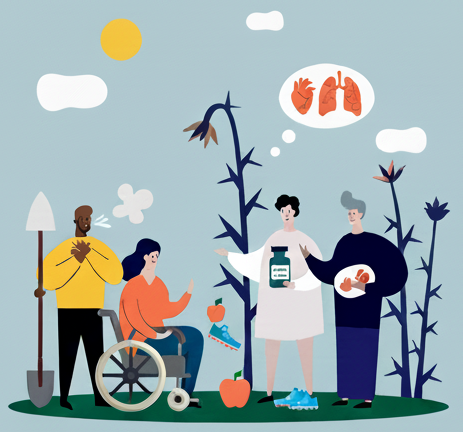 A growing body of scientific research supports these recommendations. Numerous studies have confirmed that engagement in cultural activities—from visiting museums to joining a choir—can lead to measurable health benefits.
A growing body of scientific research supports these recommendations. Numerous studies have confirmed that engagement in cultural activities—from visiting museums to joining a choir—can lead to measurable health benefits.
Research from WHO’s collaborating centres in the UK shows that elderly people engaged in cultural activities experience a 25% decrease in chronic pain conditions. Children involved in arts programs display lower rates of hyperactivity and inattention later in school, a critical indicator in times of Attention disorders due to digital media overconsumption.
In 2022, around two-thirds of all deaths in the European region were due to diabetes, cardiovascular diseases, chronic respiratory diseases, and mental health conditions. Not only do NCDs affect life expectancy, they are also responsible for 77% of the disease burden in the European region.
The high societal costs associated with this will continue to grow as the EU population ages. NCDs account for the largest proportion of healthcare expenditure in countries, costing EU economies EUR 115 billion, or 0.8% of GDP, each year. On a human level, a non-communicable disease diagnosis impacts not only the patient, but also the well-being of their carers, thus creating a ripple effect.
In 2019, a World Health Organisation (WHO) review examined more than 900 studies, recognising the arts' role in health promotion, communication, and disease prevention, in the most comprehensive global assessment of culture and health to date. The EU’s CultureForHealth report in 2022 added to this by analysing 310 peer-reviewed studies and mapping over 800 projects, with the database funded until 2028. The WHO-UCL Collaborating Centre has since produced an additional 115 publications linking cultural participation to better health outcomes. At the same time, in January 2023 the Jameel Arts & Health Lab, was launched by WHO to serve as an international research hub.
Mental Health and the Arts
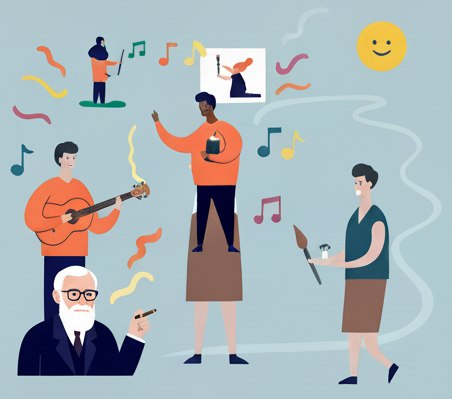 In 2022, more than 1 in 2 people were considered at risk of depression across the EU. Mental distress comes at a high financial cost, representing no less than 4% of GDP. With over 20% of the EU population aged 65 or over as of 2023, and with healthcare systems facing financial strain and worker shortages, the report positions culture as a practical and effective enabler for preventative and therapeutic care.
In 2022, more than 1 in 2 people were considered at risk of depression across the EU. Mental distress comes at a high financial cost, representing no less than 4% of GDP. With over 20% of the EU population aged 65 or over as of 2023, and with healthcare systems facing financial strain and worker shortages, the report positions culture as a practical and effective enabler for preventative and therapeutic care.
Citing WHO data, Commissioner Micallef noted that one in seven people worldwide lives with a mental health condition — a figure amounting to over one billion individuals. “Behind every number is a person,” he stressed, reminding the audience that mental health issues are not just private, but they touch families and communities everywhere. “Culture alone cannot solve the mental health crisis,” he said, “but the mental health crisis cannot be solved without culture.”
In the realm of mental health and social inclusion, the report praises Portugal's "Manicómio," a groundbreaking creative hub and art gallery in Lisbon. The name, which translates to “asylum,” is a deliberate act of reclaiming a stigmatised term. The space exclusively showcases the work of artists with mental health conditions, providing them with a platform for expression and economic opportunity while challenging public prejudice.
The Italian Minerva project (2024) at the Palazzo Maffei Museum involved 103 participants, of whom 67% reported psychological distress at the start. After just three museum visits, statistical analysis showed significant reductions in anxiety (p < 0.022), depression (p < 0.037), and distress (p < 0.001).
Arts on prescription
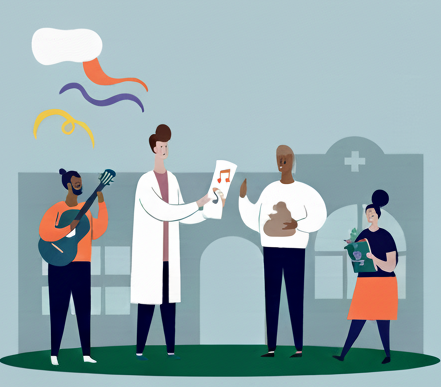 There are several successful initiatives across Europe that demonstrate the link between culture and health. These case studies provide a blueprint for how member states can implement similar programs.
There are several successful initiatives across Europe that demonstrate the link between culture and health. These case studies provide a blueprint for how member states can implement similar programs.
“Arts on Prescription” pilots across seven countries (Denmark, Finland, Germany, Latvia, Lithuania, Poland, Sweden) between 2023 and 2025 demonstrated how culture can be prescribed like medicine. These programmes were structured in three cycles, each lasting 8–12 weeks, with participants taking part in 1–2 cultural activities per week across three or more art forms. Target groups included young people from 16 years old and adults up to 65. Evaluations, including those in Finland on healthcare clowning and participatory dance films, showed measurable reductions in depression, anxiety, and loneliness.
Another prominent example is Italy's "Nati per Leggere" (Born to Read) program. This nationwide initiative fosters a collaboration between pediatricians and librarians who work together to promote the benefits of reading aloud to children from birth. By providing books and guidance to new parents during routine check-ups, the program supports early cognitive development, strengthens family bonds, and lays a foundation for lifelong learning.
Latvia’s “School Bag” programme reaches more than 200,000 schoolchildren per semester, embedding cultural activities into education.
The report also showcases programs that address disability and inclusion. The IMAGO Festival in Belgium, organised by the Théâtre National Wallonie-Bruxelles, is dedicated to “Rethinking Art and Disability.” It provides a vital stage for professional artists with disabilities, allowing them to present their work and reshape narratives around disability.
Similarly, the Netherlands' renowned theatre group “Bambie” has been creating celebrated performances with actors with intellectual disabilities for years, demonstrating the high artistic potential of inclusive practices.
The Film in Hospital initiative, active in 8 countries, provides access to 150+ films in 12 languages, alongside 400 annual workshops, benefiting children aged 3 to 15.
“We have so much evidence that art and heritage are important for wellbeing and health — not just individual, but collective” said Sneška Quaedvlieg-Mihailovic, Secretary General of Europa Nostra, at Mondiacult. “Walking the Camino de Santiago de Compostela is better than any antidepressant” she added.
Policy and Prevention
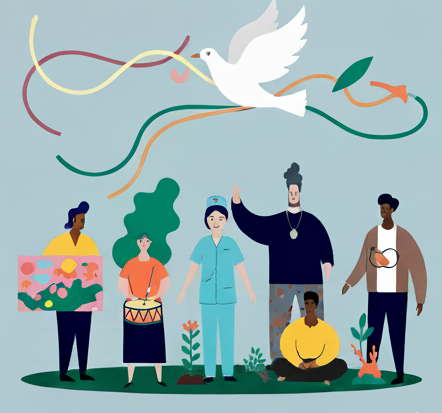 However, individual projects are not enough, and the report emphasises the need for systemic policy changes. A strong incentive to move forward comes from cultural engagement’s measurable financial returns.
However, individual projects are not enough, and the report emphasises the need for systemic policy changes. A strong incentive to move forward comes from cultural engagement’s measurable financial returns.
“We have a lot of evidence of the cost-effectiveness and medical effectiveness of cultural interventions in the health sphere” said Glenn Micallef at Mondiacult. He described attending advocacy initiatives with WHO at the UN General Assembly, highlighting the project “Music for Mothers” in Cluj, Romania, which supports postpartum women with mental health challenges: “It’s been proven that interventions through cultural policy, through music, are more effective medically — people are treated faster and in a much more cost-effective way.”
A 2024 UK study by Frontier Economics found that individual health benefits from cultural participation could be valued between £100 and £1,000 per year. At the societal level, the benefits ranged from £18.5 million to £8 billion annually. These findings show that investing in cultural health programmes is not only socially beneficial but also economically cost-effective, reducing reliance on expensive clinical services.
The European Union (EU) Work Plan for Culture 2023-2026 starts by acknowledging that ‘culture is an infinite source of inspiration and innovation, a reflection of humanity and aesthetics, our shared language and heritage, and a fundamental part of our identities and communities’. Mandated by the Work Plan, the Open Method for Coordination Group for Culture and Health began its work in February 2024.
Its remit was to recommend how the EU should respond to the international evidence that participation in cultural and creative activities and culture-based interventions supports better health outcomes and improved well-being. At the Mondiacult 2025 in Barcelona, Commissioner Glenn Micallef said that later this year, when he will propose the cultural compass, he will make sure to make an emphasis on supporting artists and creatives themselves, who are often working in precarious conditions, but who also have a huge role in this field. To illustrate the intimate link between culture and healing, Glenn Micallef shared a striking message from a respondent to one of his public consultations:
“A reply to my social media posts referred to how it was writing, photography, dancing, reading, and listening to music that helped one respondent to recover from an eating disorder as a teenager” he said. “Culture saves my life every day.” was the comment of another one. “We need to move faster, and we need to go further than ever before to get to where we want to be”, he stressed.
The EU is now investing in long-term infrastructure to scale up Culture & Health. The new Culture & Health Platform (2025–2028) will provide 170+ mobility grants, host 60+ training and peer-learning sessions, and organise 4 international conferences (in Finland, Austria, Romania, Belgium). At the national level, Lithuania extended social prescribing in 2023–24 to nine municipalities, offering free access to museums and cultural institutions for elderly citizens. Malta’s 60+ Theatre Club, launched in 2021, meets twice a month to engage seniors creatively, while Luxembourg introduced artist residencies in nursing homes in 2023, with 11 artists working directly with residents.
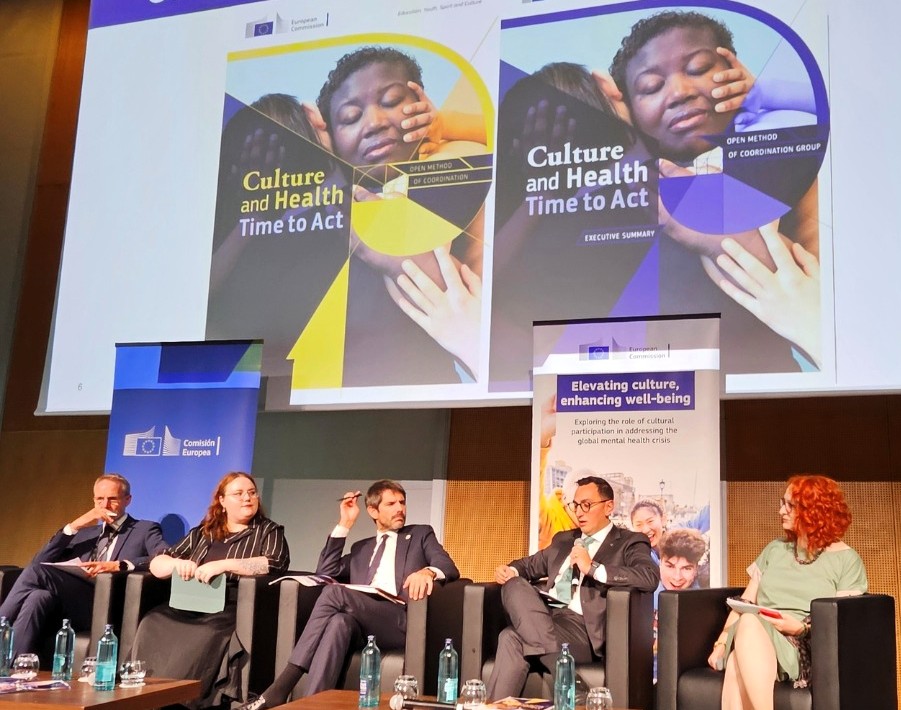
"The time to act is now," the report concludes. It calls on EU member states to move beyond pilot projects and embed culture into the very fabric of their national health strategies. The authors urge policymakers to invest in more research, foster stronger partnerships between cultural and healthcare institutions, and recognise the immense, untapped potential of the arts. This will help build a healthier, more resilient, and more culturally vibrant Europe for all its citizens.
Drawing a historical analogy, World Health Organization’s European Regional Office, Dr. Gundo Weiler, compared today’s cultural-health movement to the early days of recognizing physical activity as essential to medicine. “We are at that same point, like maybe in the late 80s or 90s,” he said. “And I see a future where culture and arts interventions will be prescribed by physicians alongside drugs or healthy diets or physical activity.”
Images: CU with Gemini & Glenn Micallef on X & Creative Europe on Facebook








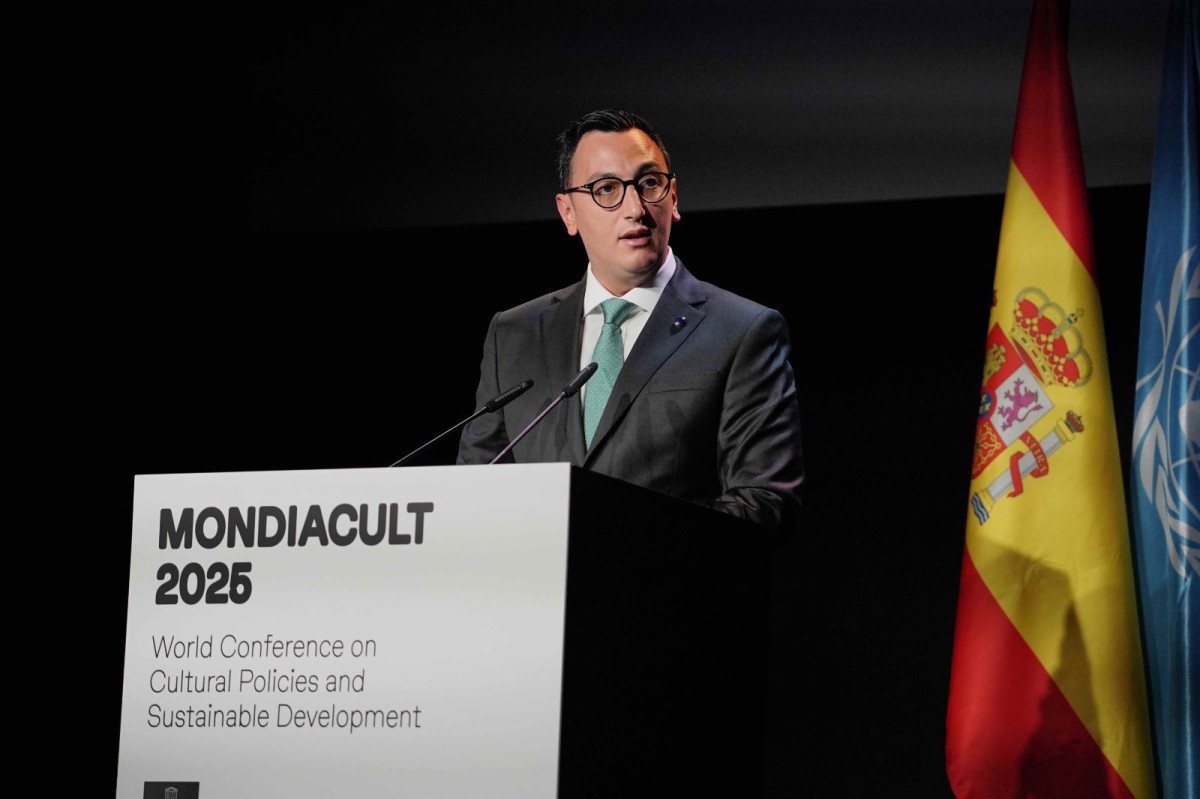
 A growing body of scientific research supports these recommendations. Numerous studies have confirmed that engagement in cultural activities—from visiting museums to joining a choir—can lead to
A growing body of scientific research supports these recommendations. Numerous studies have confirmed that engagement in cultural activities—from visiting museums to joining a choir—can lead to  In 2022, more than 1 in 2 people were considered at risk of depression across the EU. Mental distress comes at a high financial cost, representing no less than 4% of GDP. With over 20% of the EU population aged 65 or over as of 2023, and with healthcare systems facing financial strain and worker shortages, the report positions culture as a practical and effective enabler for preventative and therapeutic care.
In 2022, more than 1 in 2 people were considered at risk of depression across the EU. Mental distress comes at a high financial cost, representing no less than 4% of GDP. With over 20% of the EU population aged 65 or over as of 2023, and with healthcare systems facing financial strain and worker shortages, the report positions culture as a practical and effective enabler for preventative and therapeutic care.  There are several successful initiatives across Europe that demonstrate the link between culture and health. These case studies provide a blueprint for how member states can implement similar programs.
There are several successful initiatives across Europe that demonstrate the link between culture and health. These case studies provide a blueprint for how member states can implement similar programs. However, individual projects are not enough, and the report emphasises the need for systemic policy changes. A strong incentive to move forward comes from cultural engagement’s measurable financial returns.
However, individual projects are not enough, and the report emphasises the need for systemic policy changes. A strong incentive to move forward comes from cultural engagement’s measurable financial returns. 